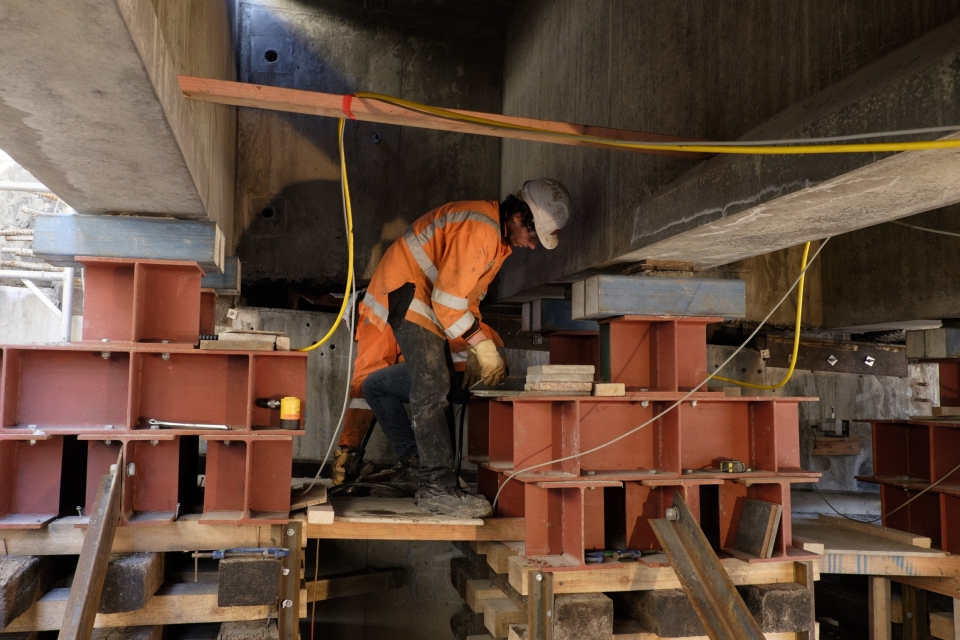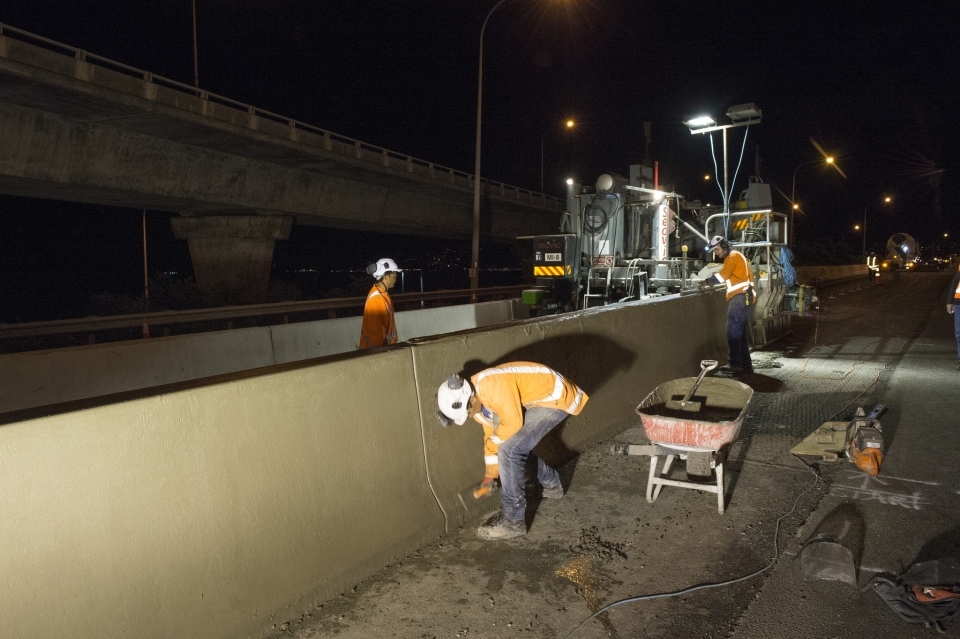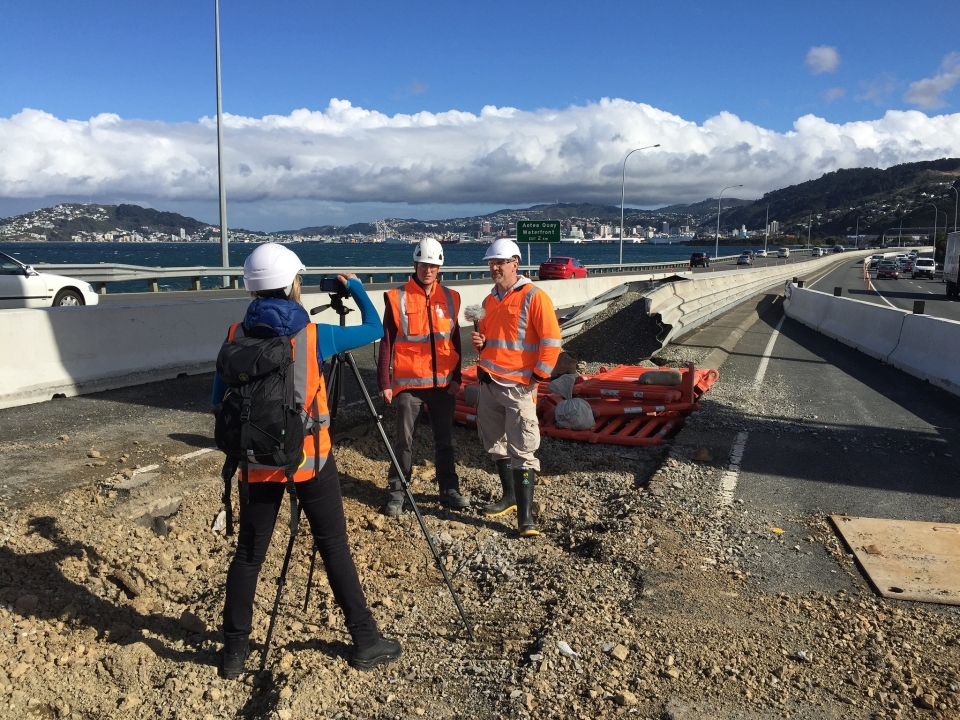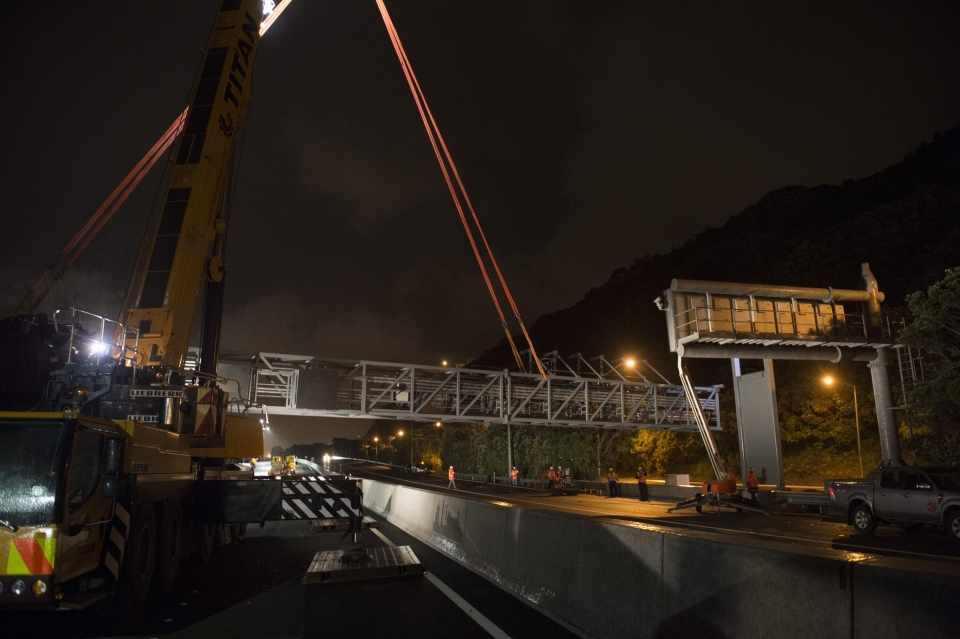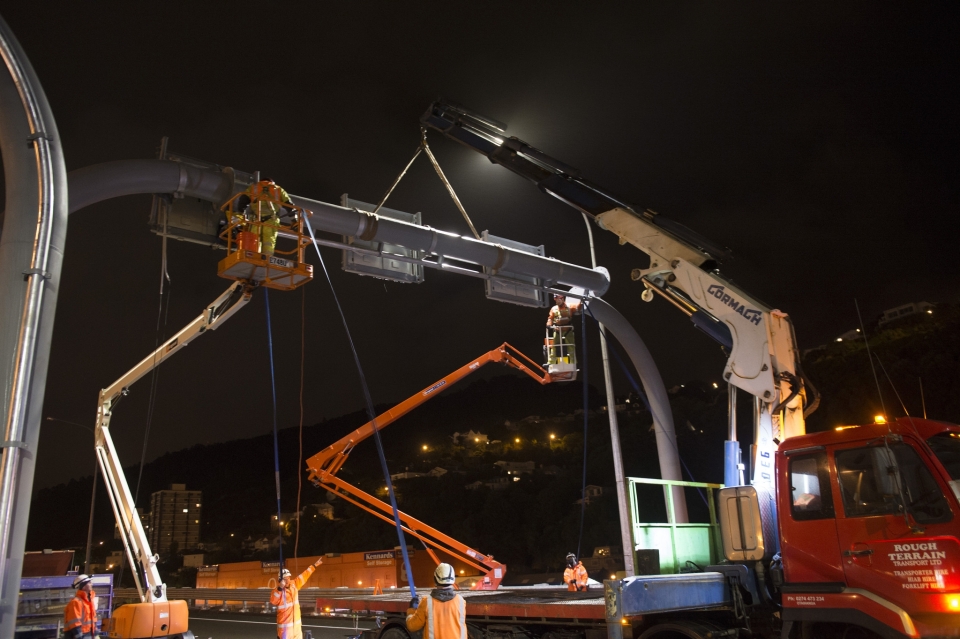Constructing New Zealand’s first smart motorway
To make a motorway ‘smart’ construction, technology and driver education are needed.
What can you remember from the first field trip about how a Smart Motorway works?
Construction Overview
The main elements of the smart motorway construction are:
- Removing and replacing the central median barrier
- Moving an old bridge
- Building gantries for signs
- Widening the SH2 off-ramp
- Building an emergency on-ramp for emergency services.
By making small changes to the motorway, another northbound lane can be created. This will increase the capacity of the motorway, which means there’s more space, so congestion will be reduced.
Clever methods have been used to find space for this new lane. Such as: 
- A small grass verge will be used
- An unused edge of the bridge at Kaiwharawhara will become part of the new lane
- Replacing the existing gravel-filled median barrier with a narrower and safer concrete barrier will add an extra 3.5 to 4 metres of valuable road width.
Progress on site since the first field trip in August 2015
When you visit the Smart Motorway construction site in March 2016 you will notice that the following work has been completed in the six months since the first field trip.
- The unused off-ramp at Kaiwharawhara has been pushed closer to the highway and ‘stitched’ to the Thorndon Overbridge with a seam of strengthened concrete. The bridge has been re-surfaced and will become part of the new northbound lane.
- Eight new overhead gantries have been installed
- Over 1500m of central median barrier has been replaced
- Street lights are being replaced with more natural, lower energy LED bulbs and 14 new lamp posts have been installed at the Ngauranga end of the site.
NZTA's updates and more about the completed Smart Motorway: https://www.nzta.govt.nz/projects/wellington-northern-corridor/smart-motorway/.
Technology
Along with the technology being used to create the Smart Motorway other tools are also being developed. You can check out a newly launched mobile friendly website called DriveLive Smart Capital to provide up-to-the-minute journey times for key routes within the Wellington region. The information is updated every five minutes. http://drivelive.nz/smartcapital
During the second field trip you will be able to visit the construction site. You will meet experts to find out more about the design of the Smart Motorway and the technology that transforms an ordinary motorway into a Smart Motorway. You’ll also see how careful research has helped design the campaign to develop smart drivers. See you on site 1-3 March 2016.

